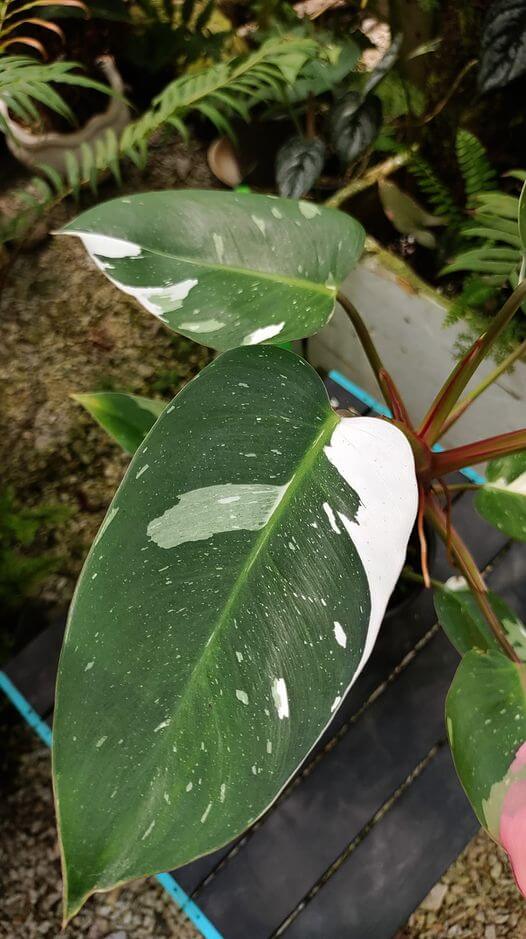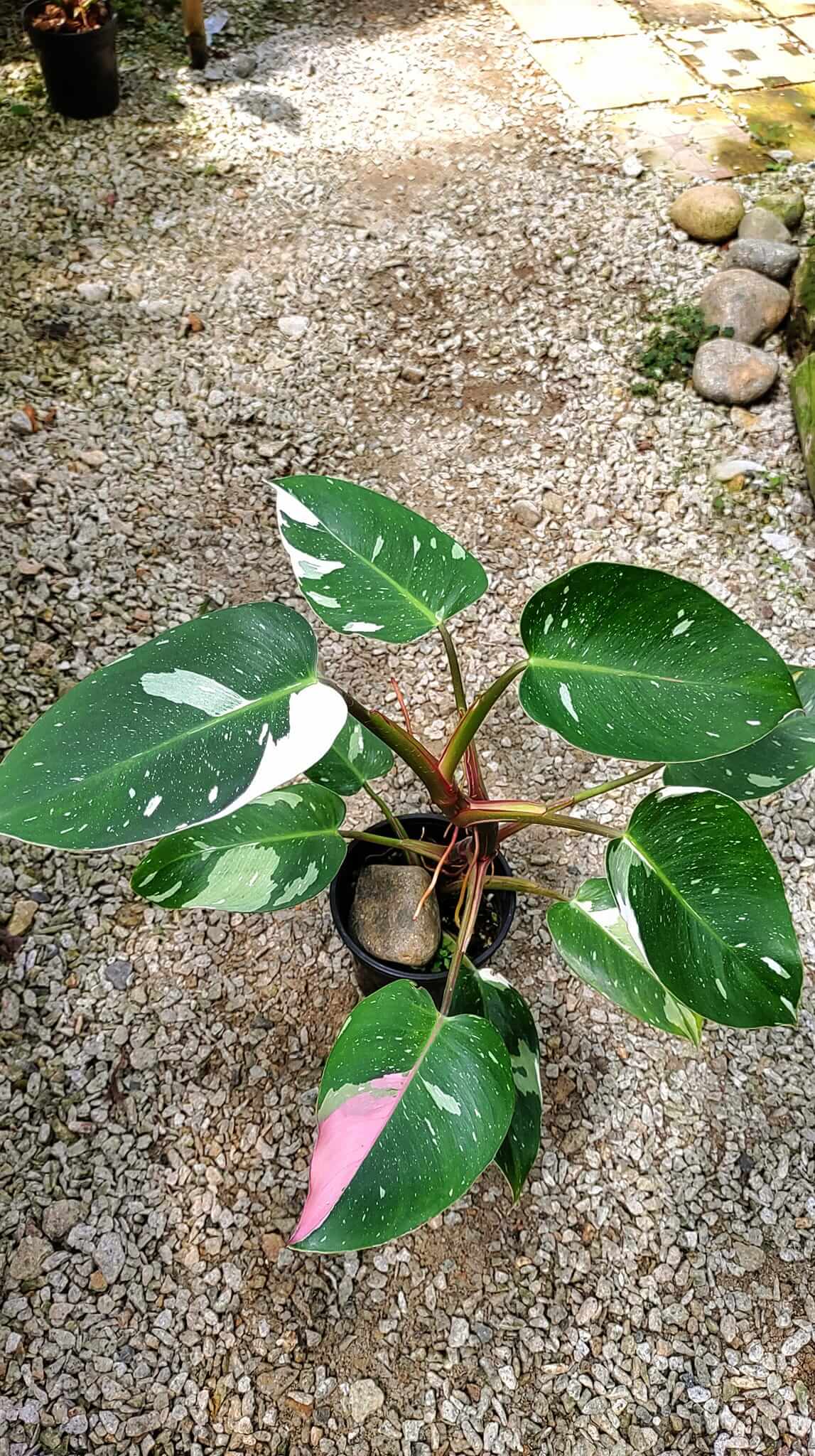Basic Information
The White Princess Philodendron is an indoor plant that adds a striking touch to your indoor garden. Its beautiful green leaves are generously splashed with white, which makes it a delightful sight to behold. If you take care of the White Princess plant as per the basic requirements, it can be a long-lasting addition to your indoor garden.



Light
Philodendron White Princess is a plant that requires bright, indirect sunlight to grow well. Direct sunlight can harm the leaves, so it’s better to protect it from it. To ensure optimal variegation, providing the plant with at least six hours of light is ideal. The White Princess plant needs a light intensity of 10,000-20,000 lux. The best spot for this plant in your home is next to a north or east-facing window. Alternatively, you can place it in a shadier spot in a west or south-facing room.
Water
To keep your plant healthy, it is essential to water it when the topsoil feels dry. Consistent moisture is vital, but be careful not to overwater or let the soil dry out completely, as both can harm the plant. Depending on the type of plant and the environment, you may need to water every 7-10 days. To check if it’s time to water, use the finger test. Just stick your finger in the soil up to the first knuckle. If the top inch of soil is dry, it’s time to water. It’s crucial not to let your Philodendron White Princess sit in water as the roots can rot and die.
Soil
To grow a White Princess Philodendron plant optimally, use well-draining soil with a mildly acidic to neutral pH level between 5.6 and 7. The soil mix should be nutrient-rich, lightweight, and airy to avoid root rot caused by excess moisture. Combine potting mix or compost with sphagnum moss, perlite, and peat moss to create the ideal soil mix. If the soil is too compact, add pine bark or vermiculite to loosen it up.
Temperature
Ideal temperatures for the plant range from 60°F to 85°F (15°C to 29°C). It should be kept away from cold drafts and hot vents as it is sensitive to extreme temperatures.
Humidity
The White Princess plant requires a humid environment to grow healthily. The humidity levels should be maintained between 60% and 80%. You can use a humidifier or place the plant on a pebble tray to ensure the required level of humidity. If you have several tropical plants that need high humidity, you can group them together around a small humidifier. This will moisten the air in their immediate vicinity.
Tip: To keep your plant healthy, the simplest approach is to spray its leaves with distilled water every few days.
Fertilizer
During the spring and summer growing seasons, it is recommended to fertilize your White Princess Philodendron plant every two weeks with a balanced houseplant fertilizer, diluted to half strength. Over-fertilization should be avoided, especially in the dormant winter months. The best fertilizer for White Princess Philodendron is a liquid one that can be diluted in water and applied to the soil. Do not fertilize when the soil is dry, as the fertilizer is likely to run right through and not be absorbed. The best fertilizer ratio for White Princess Philodendron is an even 10-10-10. A balanced, diluted nitrogen fertilizer should be applied every few weeks for optimal feeding.
Growth Rate
This plant is self-supporting and grows upright, reaching heights of 3-5 feet with a spread of 1-2 feet. It grows most actively in summer and spring.
Pet Safety
The Philodendron White Princess is toxic to both pets and humans if ingested. It’s crucial to keep the plant out of reach of children and pets
Grow in Semi-Hydro
- Philodendrons, celebrated for their lush foliage and adaptability, thrive in semi-hydroponic systems such as LECA/Pon, thanks to their resilient root systems and preference for consistent moisture.
- Shifting a Philodendron to a semi-hydroponic setting works well using a Nutrient Stagnant Wicking (NSW) method, providing a stable and effective environment for growth.
- Within the LECA/Pon environment, Philodendron roots adapt swiftly, effectively managing any early challenges in adapting to the NSW system.
- For nourishing Philodendrons in semi-hydro systems, a nutrient solution with a concentration around 800-1000ppm is optimal.
- Philodendrons are versatile in adapting to a range of temperature and humidity levels, making them ideal for various indoor settings.
- Regular care involves keeping an eye on the water level in the reservoir and periodically flushing the system to ensure the Philodendron’s healthy and consistent growth.
- If your Philodendron is a climber, it’s a must to look at our Moss Pole guide to have a proper set-up.
Tips
- Place in a sunny window with high humidity.
- Avoid overfeeding the plant to prevent burning and stress.
- Monitor for pests and diseases, especially mealybugs, aphids, scale, and spider mites. Treat with neem oil or insecticidal soap if needed.
- Regularly clean the leaves to prevent dust buildup and aid in photosynthesis.
- Rotate the plant to ensure even growth and exposure to light.
- Repot every 2-3 years to refresh the soil and accommodate growth.
- Watch for signs of stress, such as yellowing or browning leaves, which could indicate issues with watering, lighting, or temperature.
- Prepare the plant for spring by increasing watering and feeding
By following these guidelines, your Philodendron White Princess will thrive and add an exotic touch to your indoor garden.
Happy planting! 🌱


